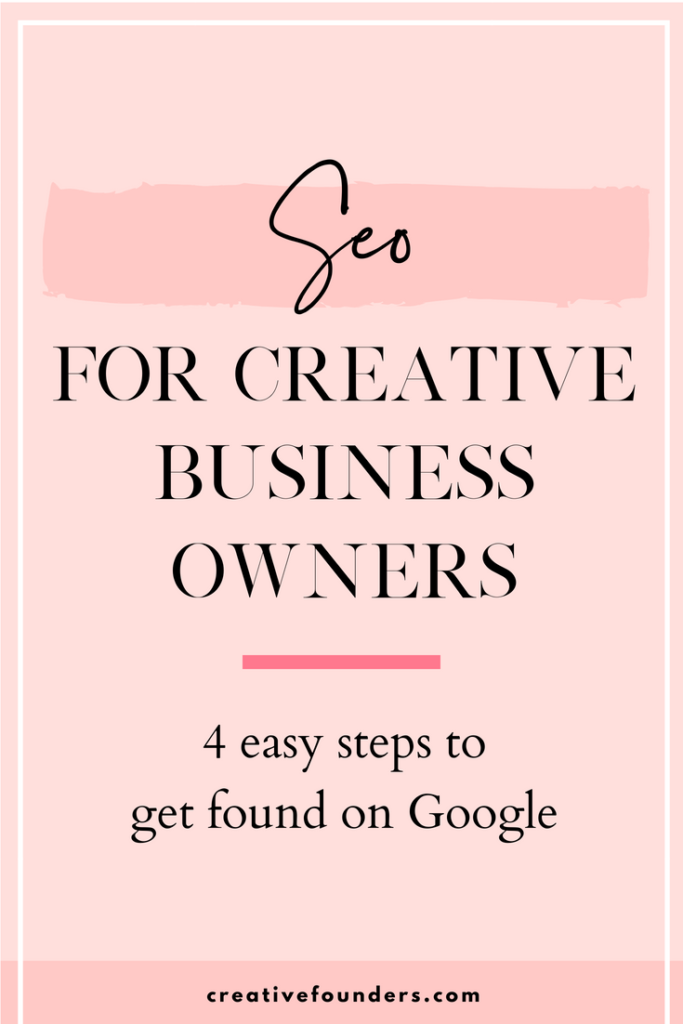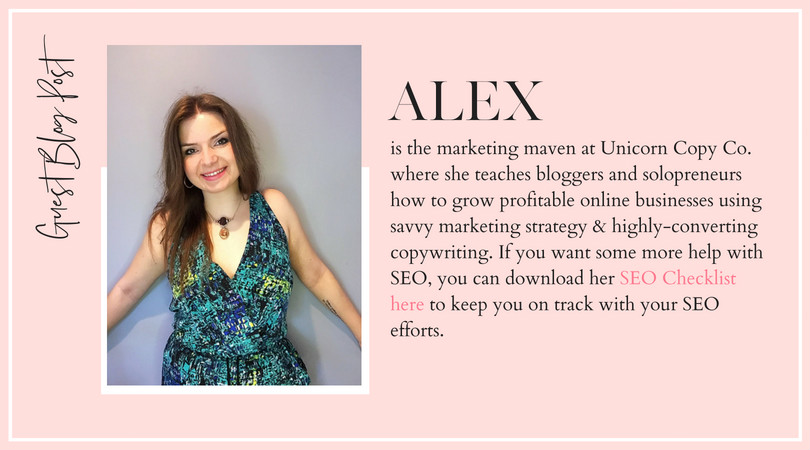SEO FOR CREATIVE BUSINESSES: 4 EASY STEPS TO GET FOUND ON GOOGLE
SEO.
You probably see the term a lot, right?
Chances are, you ignore it.
Maybe because it sounds complicated.
(That used to be me.)
But mostly because learning yet another tactic sounds burdensome, doesn’t it?
You’re probably thinking…
Not only do I have to hustle hard as a creative entrepreneur as it is, now you’re telling me I need to build my brand, sell my art, and learn SEO, to boot?
Yes. Yes. And yes!
See, using SEO for your creative biz empire is a killer strategy.
When you use it correctly, SEO drives hordes of traffic to your website over time.
Free traffic.
And here’s my promise to you:
In this post, you’ll learn how to use SEO (in four easy steps) to get found on Google — even if you’ve been avoiding the three-letter acronym till this very day.
Are you with me?
Then let’s begin with this quick primer on SEO first.
SEO for Creative Business Owners: 4 Easy Steps to Get Found on Google
A Quick Primer on SEO
Remember the last time you googled something.
Whatever term you plugged into Google’s search engine is called a keyword.
These search terms, or keywords, are a main focus of SEO (search engine optimization).
Think of SEO this way:
Making your online content more “searchable” so that people can find it — and you — easily.
One of the primary ways you do this is by using keywords strategically in your blog posts, product pages, and web copy.
That’s the basics of SEO in how it relates to using keywords!
Now, let’s move on to the first step in getting found on Google:
Using the right tool.
Step 1: Use The Right Tool
When I was first learning the ins and outs of SEO, I had a hard time finding the right tools to help me.
I needed a resource that could show me the best keywords to use for my niche.
Sadly, I couldn’t find a quality tool for a while.
That is, until I found KWFinder.
One of the main things KWFinder has going for it is that you can use it for free.
Yes, you heard me right.
Granted, you’re only allowed 5 keyword searches in a 24-hour period (when you sign up for their free account; you get 2 keyword searches without signing up), but that’s more than plenty for most creative business owners.
I’ll show you how it works here:
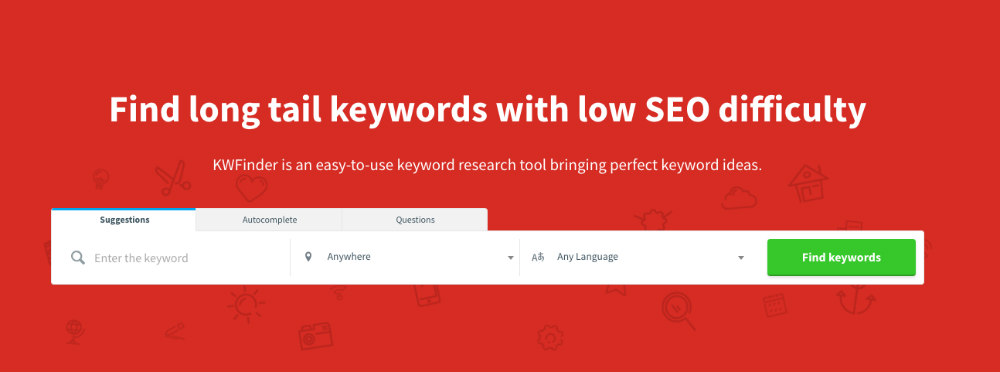
Notice I’m searching for the keyword “tiger lily painting.”
After you hit “Find keywords,” this page will come up:
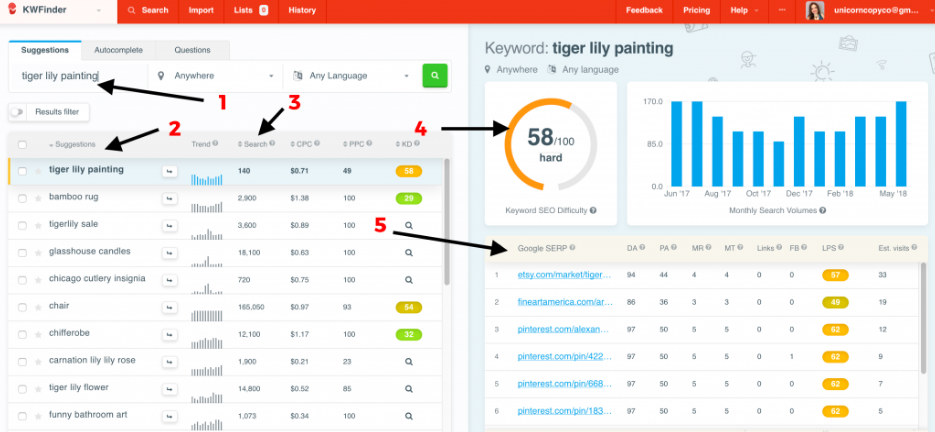
Don’t feel overwhelmed.
All this info is actually a good thing; it’ll help you strategize your SEO way better.
I numbered the most important parts. Let’s go over them:
- Your keyword: this is the keyword you searched for
- Suggestions: common keywords people search for along with the one you plugged in
- Monthly search volume: an estimated count of how many times people search for this keyword in any given month
- Keyword difficulty: how hard it will be to rank higher in Google page results based on a variety of factors (1 = easiest to rank for, 100 = hardest to rank for)
- Google page results: the actual Google page results that come up when you searched for the given keyword (useful to see how people are using this keyword in their own content)
Not so bad, right?
Now that you have a general idea on how to use KWFinder, let’s start to put some strategy to work here.
Step 2: Pick A Keyword
This is the part where you pick a keyword you want to use.
Here’s how you’ll pick the right keyword:
- Decide on a general topic (this is probably dictated by what you’re selling or trying to teach)
- Decide whether this keyword is for a product page or to deliver information
- Search for the keyword on KWFinder
- Decide on your keyword after looking at the stats
Here’s an example to illustrate this process in action:
Let’s pretend I’m an artist from NYC.
I want to sell my modern flower art.
I decided on a general topic: modern flower art.
My intent with this keyword is to attract buyers to my online art collection.
I searched for “modern flower art” on KWFinder:
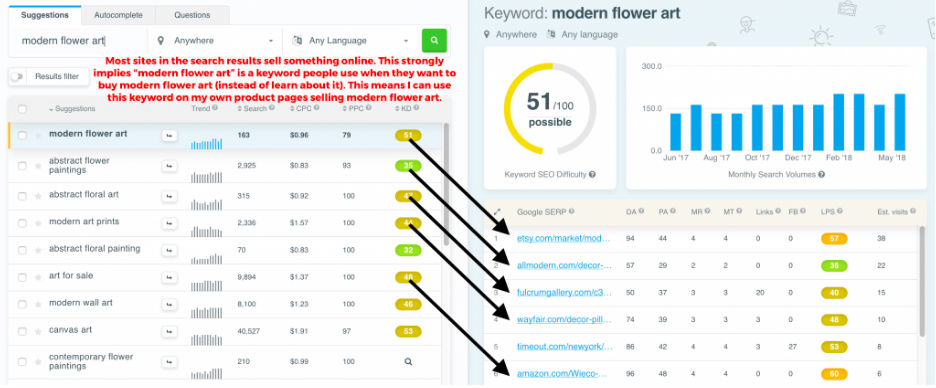
Notice the main search results all point to sites that sell products online.
This is good news!
That means the search results for this keyword align with the way I want to use this keyword, too:
To sell my modern flower art.
Googling this keyword confirms this again. Look at all the links that take you back to online art galleries and stores:
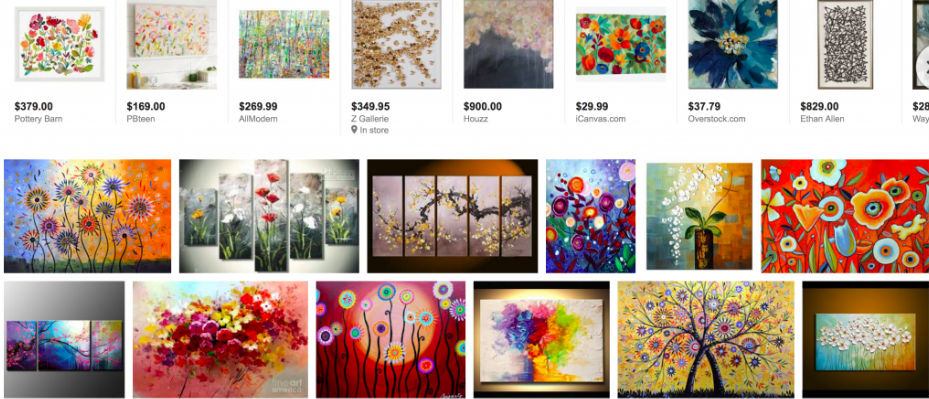
Finally, I have to decide if I want to use this keyword.
It gets 1,573 searches on average in a month.
It has a keyword difficulty of 54 (anything up to 60 is fine; after that, it gets harder to get found on Google).
This looks like a pretty solid keyword to me.
Pretend-artist-Alex-from-NYC will use it!
Next, you’ll learn how to actually use this keyword in your online content (whether it’s a blog post, a product page, or any page on your website).
Step 3: Use Your Keyword
Here’s the thing:
You don’t want to overuse your keyword in any kind of web copy you write.
Because keywords are not glitter.
And you should not treat them as such.
Google doesn’t like this kind of practice, and your page or post can be negatively affected in Google search rankings if you spam your keyword everywhere.
What’s a good rule of thumb, then, so you don’t accidentally “over-stuff” your keyword?
Ideal “keyword density” is around 1.5 percent.
That means you can use your keyword once every 100 words and you’ll still keep the Google gods happy.
Here are several places you can place your keyword to boost your SEO:
- Headlines (H1, H2, H3 tags, and so forth)
- Page Titles (the titles you see in Google search results)
- Meta descriptions (the short description under the title in Google search results)
- URLs (yep, your URL can be your keyword!)
- Image’s “alt” tags (these are the alternative text to your images)
- Body copy (self-explanatory)
Image alt tags are an often-overlooked place to place your keywords.
You can modify this directly in your content management system (such as WordPress).
If you have a WordPress site, the Yoast plugin is really useful for keeping track of metrics like keyword density.
It’ll also let you know if you haven’t used your keyword in your body copy enough, whether it’s missing in the meta description for your page, and so on.
Pro tip: If you sell a physical product on your website (like a painting), then don’t take down the page after you sell the product.
Take a look at this product page from Carmen Guedez’s website:
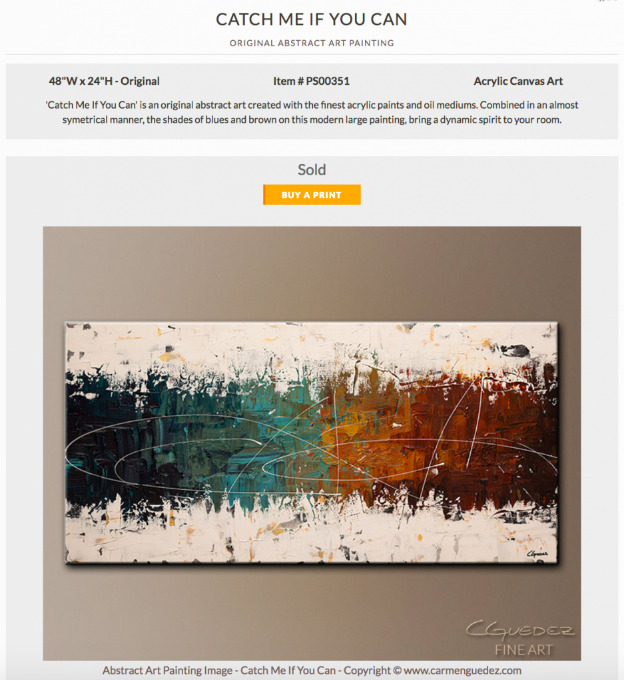
This painting is sold out, but she still keeps the product page live.
Why?
Well, guess how I found her website?
Through Google image search.
Think of your online store like a mega SEO asset:
The entire web page for that painting can still bring waves of traffic to your site long after the painting sells.
Now that you have a grasp on how to use your keywords in your content, you’re ready for the final step.
Step 4: Rinse, Repeat & Wait
“Rinse, Repeat & Wait.”
I need to emphasize this part!
Many people ask me:
How long till I can get found on Google using SEO?
See, SEO is a long-term strategy.
According to their crazy-comprehensive study on the question, “How long does it take to rank in Google,” Ahrefs points out that “it depends,” with some content taking 2-6 months to rank in the first page of Google, and some content taking 2-3 years to get to the first page.
You need to build your strategy and implement it, knowing traffic will trickle in during the beginning.
That’s perfectly normal.
As long as you keep ranking your content for many relevant keywords using the process I outlined above, you are bound to get found on Google!
Over time, you’ll notice your traffic will increase.
That’s why it’s critical you keep implementing SEO in a strategic manner; little efforts compound into big results over time.
What do You Think About SEO (And How to Get Found on Google) Now?
I hope SEO seems way less daunting now.
This is the same exact process I use to map out my SEO strategy for my blogs.
I used to be an avid painter and love seeing other people’s work online — actually, it saddens me to think I can’t see more of people’s work online.
After all, there’s no better time than today to build your unique brand, market your inspirational work, and share your talent with the world.
…So, what are you waiting for?
Implement that SEO strategy and get found on Google sooner rather than later!
If you enjoyed this post, please check out The Unicorn Copy Co. and show your support!
www.unicorncopy.co
www.pinterest.com/unicorncopyco

